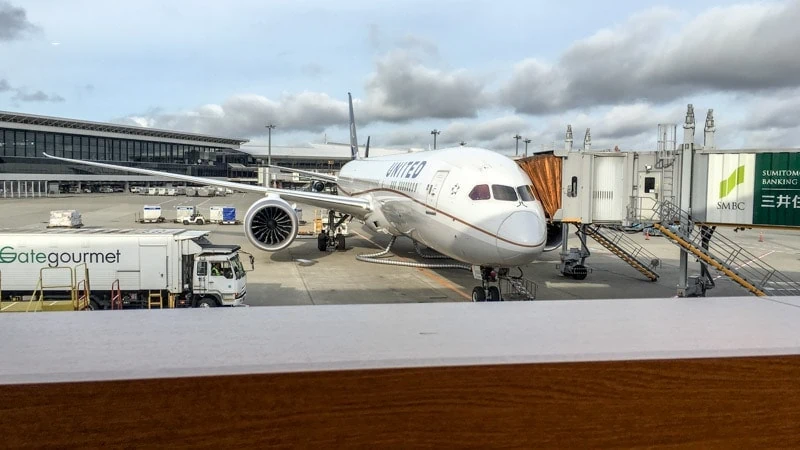
First-time Japan visitors often ask me, “Which airport in Tokyo should I fly into, Narita or Haneda?” This is a tough question, as there is no easy answer.
Which airport you fly into depends on factors including price, connections, the location of your hotel, and where you are heading after you land. Both airports are world-class. They offer excellent services and some of the best on-time performances of any airport worldwide.
Narita International Airport is further from central Tokyo than Haneda International Airport. Almost all international flights land at this airport. There are plenty of public transportation options to reach central Tokyo from the airport, including the JR Narita Express, the Keisei Skyliner, buses, taxis, and even helicopters.
Haneda International Airport is closer to central Tokyo than Narita International Airport. Almost all domestic flights land at this airport. There are fewer transportation options from the airport to central Tokyo, some requiring transfers, but the journey is much quicker and cheaper.
If you are looking for more information about Tokyo and Japan, I highly recommend you pick up a guidebook such as Lonely Planet Best of Tokyo 2020
Table of Contents
Narita International Airport
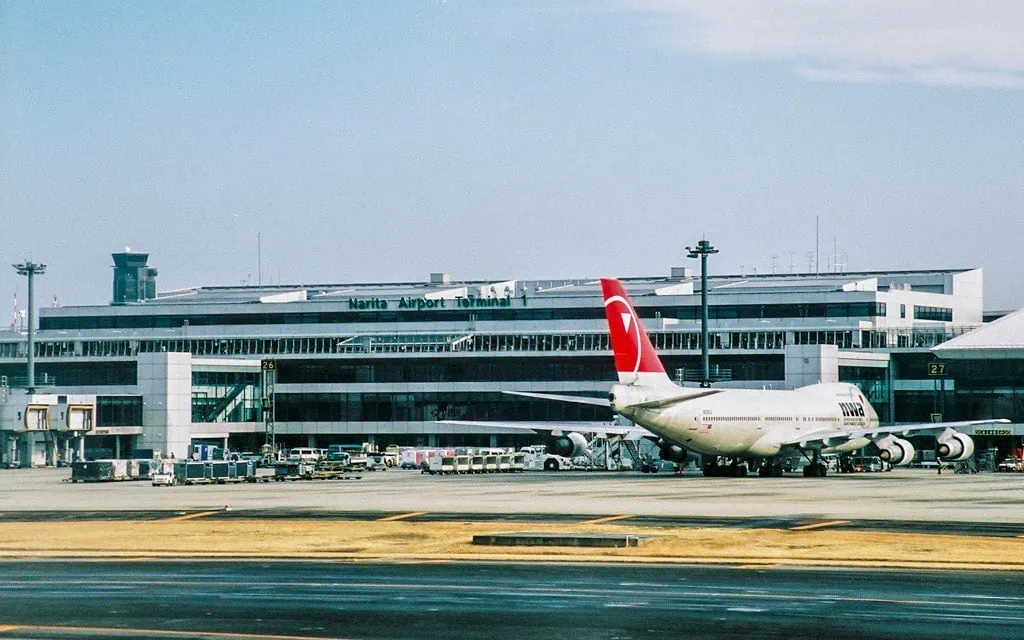
If you are flying into Tokyo from the United States or other international destinations, you will most likely land at Narita International Airport. The airport lies about 37 miles (60 kilometers) east of central Tokyo.
About half of all international passengers traveling to Japan pass through Narita International Airport. Even with all these passengers, the airport is only the second busiest airport in Japan after Haneda Airport.
Narita Airport is the central international hub for Japan Airlines (JAL) and All Nippon Airways (ANA). The airport also serves as a global hub for United and Delta. Almost all major international airlines have flights that arrive and depart at Narita Airport.
Low-cost carriers such as Jetstar, Vanilla Air, and Peach Aviation also use the airport.
Two companies operate trains between Narita International Airport and central Tokyo: JR East (East Japan Railway Company) and Keisei Electric Railway.
Pros of arriving and departing at Narita International Airport
- Extensive selection of international airlines arriving and departing.
- There are more public transportation options to central Tokyo than Haneda Airport.
- Narita Express allows direct access to major stations, including Tokyo Station, Shinjuku Station, and Shibuya Station.
Cons of arriving and departing at Narita International Airport
- Located further away from central Tokyo
- Public transportation options are more expensive than Haneda Airport.
How to get to Tokyo from Narita International Airport by JR East lines
JR East offers two main ways to reach central Tokyo from Narita International Airport.
The first is the more expensive but comfortable Narita Express train. The second is the slower but much cheaper Narita Line Rapid Train/Sōbu Line Rapid Train.
JR Narita Express (N’EX) Train
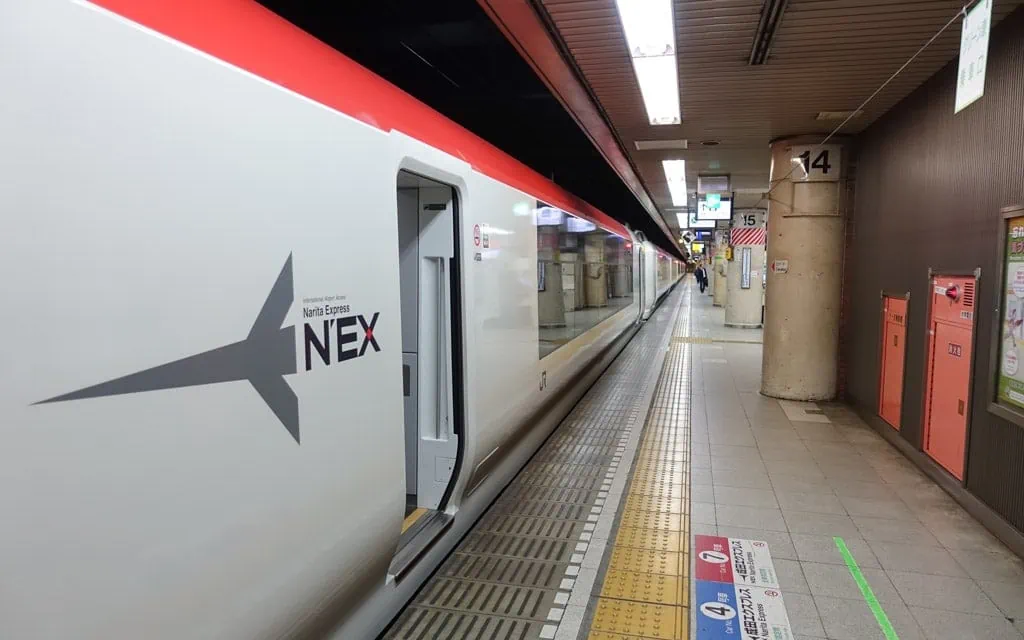
The Narita Express (N’EX) is my favorite way of reaching central Toyko from Narita Airport. I often stay in Shinjuku, so I usually find myself taking the Narita Express train each time I land in Tokyo.
The Narita Express stops at major stations across Tokyo, including Tokyo Station, Shibuya Station, Shinjuku Station, and Ikebukuro Station. Certain trains continue to Yokohama, Totsuka, and Ofuna.
Prices and times vary by your final destination and if you are traveling in the high or low season.
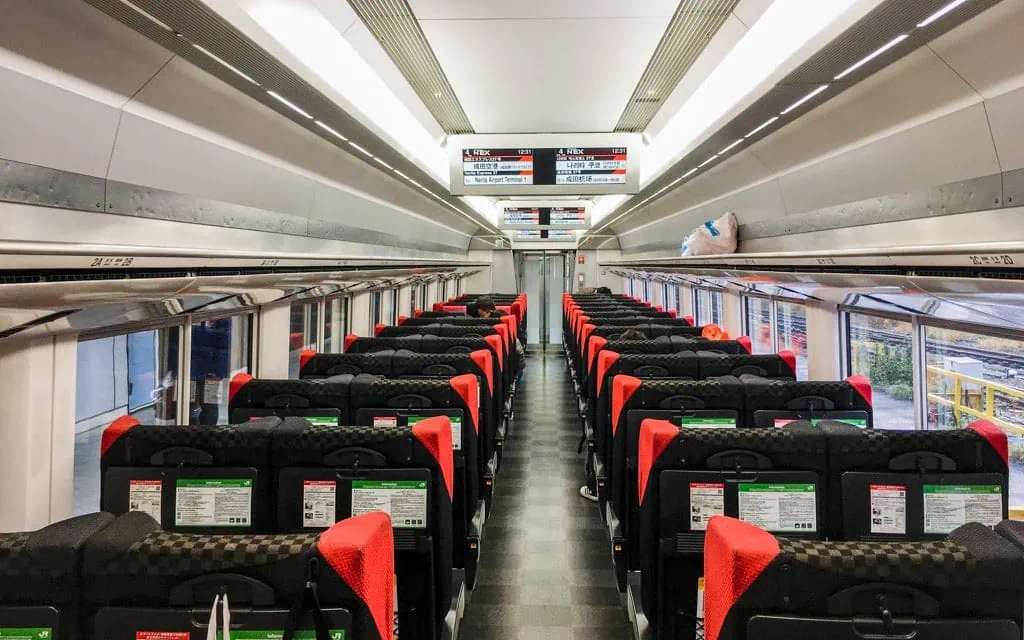
The inside of Narita Express trains is very comfortable. They feature airplane-style seats, plenty of luggage space, overhead bin space, and LCD screens. These screens alert travelers of important information about arriving and departing flights, the current location of the train, and estimated travel and arrival times.
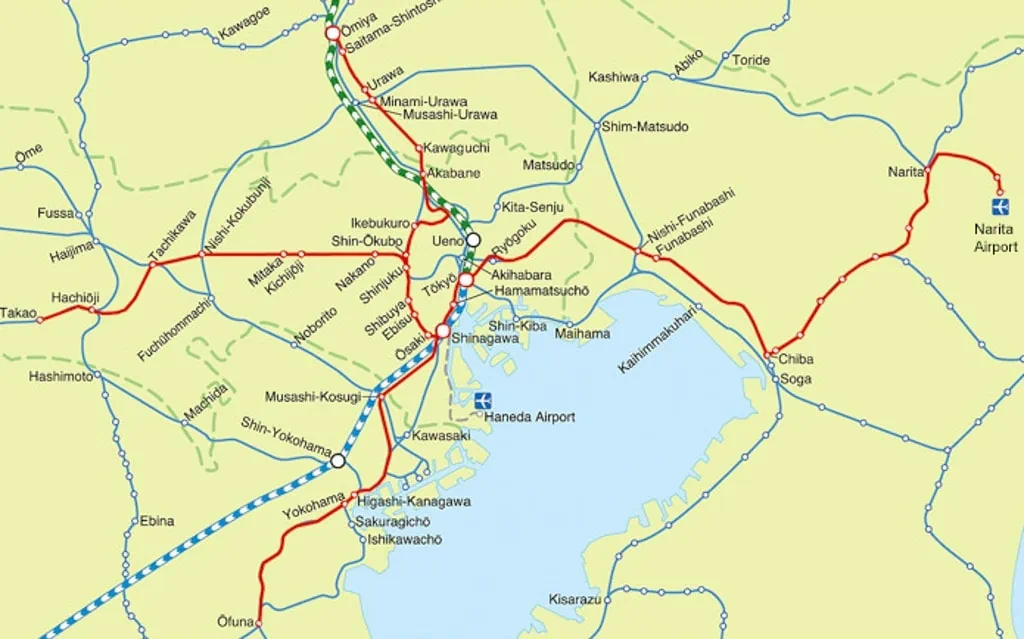
Certain rail passes fully cover the journey on the Narita Express. However, using your JR Pass on the Narita Express will use up one of your days, so make sure you plan your journey correctly.
Are you looking to purchase a Japan Rail pass? I highly recommend buying your pass through an official vendor such as JRailPass.com.
Narita Express one-way fares and times from Narita Airport to:
| Destination | Travel Time | Ordinary Car | Green Car (First Class) |
|---|---|---|---|
| Tokyo Station | About 60 minutes | 3,070 yen | 3,840 yen |
| Shinagawa Station | About 70 minutes | 3,250 yen | 4,020 yen |
| Shibuya Station | About 80 minutes | 3,250 yen | 4,020 yen |
| Shinjuku Station | About 85 minutes | 3,250 yen | 4,020 yen |
| Yokohama Station | About 90 minutes | 4,370 yen | 6,640 yen |
| Ofuna Station | About 110 minutes | 4,700 yen | 6,970 yen |
N’EX Tokyo Round Trip Ticket
If your flights depart and arrive at Narita Airport, you can purchase a round-trip ticket on the Narita Express to save money.
The pass allows passengers to travel round trip between Narita Airport and stations across the Greater Tokyo Area (major stations listed above).
A round-trip ticket costs 5,000 yen for adults and 2,500 yen for children (6-11). The pass can save you considerable money over purchasing separate one-way tickets.
The N’EX Tokyo Round Trip Ticket is valid for two weeks after its first use and is good for reserved seats in ordinary cars only.
A couple of things to note about Narita Express train times and fares:
- Not all Narita Express trains stop at the same stations. Make sure you check the schedule beforehand to ensure that you are on the right train and the correct train car.
- Depending on the season (high or low), reserved one-way ticket prices can be 200 yen higher or lower.
JR Narita Line Rapid Train/JR Sōbu Line Rapid Train
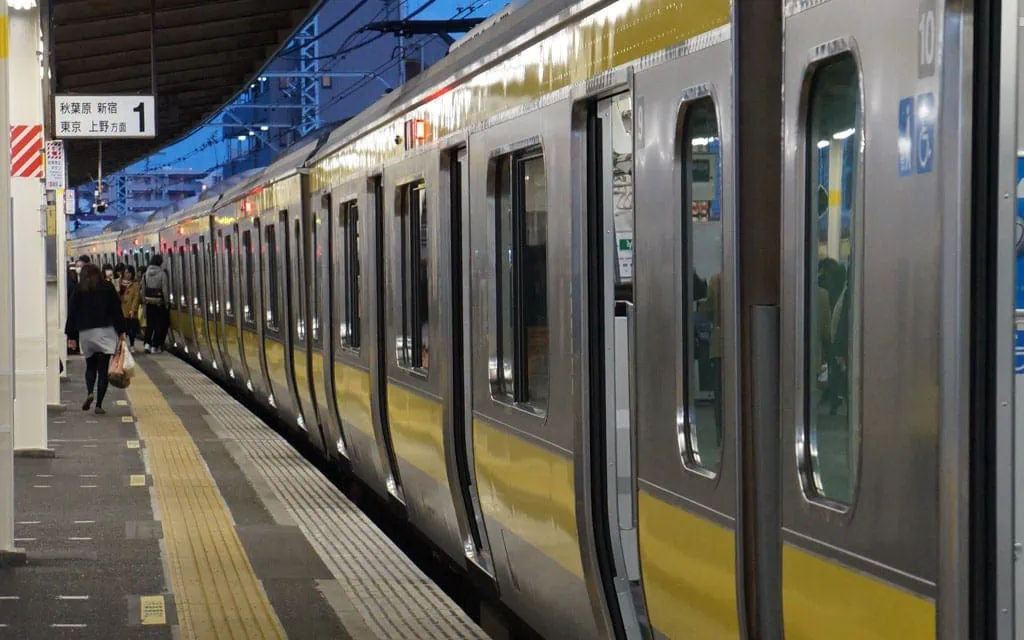
An alternative to the more expensive Narita Express is the slower and cheaper Narita Line Rapid Train/Sōbu Line Rapid Train.
The train leaves Narita Airport on the Narita Line as it heads towards Chiba Station. You do not need to change trains at Chiba Station. The train continues on the Sōbu Line to Tokyo Station.
The journey takes about 90 minutes and costs 1,320 yen. There is only about one departure per hour.
The journey on the Narita Line Rapid Train/Sōbu Line Rapid Train is fully covered by the Japan Rail Pass, JR East Pass, and JR Kanto Area Pass.
How to get to Tokyo from Narita International Airport by Keisei Electric Railway
The Keisei Electric Railway operates three lines between Narita Airport and Tokyo: the Skyliner, the Keisei Narita Sky Access Line (Access Express), and the Keisei Main Line (Limited Express).
Keisei Skyliner
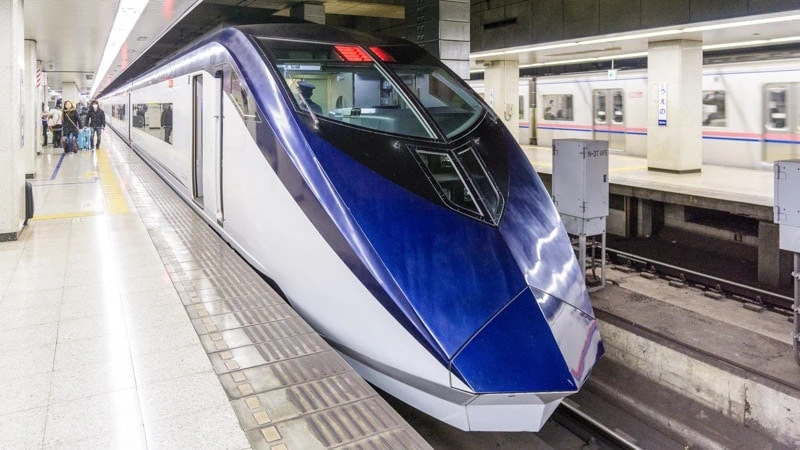
The Keisei Skyliner is one of the quickest transportation options into central Tokyo. The Skyliner travels at a top speed of 100 mph (160 km/h), just slower than the Shinkansen bullet train.
The Skyliner connects Narita Airport Station with Keisei-Ueno Station, with limited stops at Airport Terminal 2 Station and Nippori Station. No transfers are required to reach these two stations.
Its main competitor is the JR Narita Express.
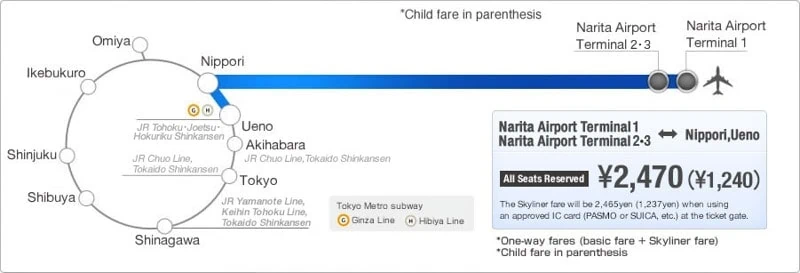
The quickest one-way journey takes about 40 minutes. Three trains depart per hour, and the train stops at Narita Airport Terminal 1 and Narita Airport Terminal 2-3.
From Narita Airport, the Skyliner takes about 40 minutes to reach Nippori Station and another 5 minutes to reach Keisei-Ueno Station.
The interior of the Skyliner is quite similar to that of the Narita Express.
All trains feature reserved airplane-style seats, generous luggage space, overhead bins, and free Wi-Fi.
One-way Skyliner fares:
- Adults: 2,200 yen (non-Japanese citizens) or 2,470 yen (Japanese citizens)
- Children: 1,100 yen (non-Japanese citizens) or 1,240 yen (Japanese citizens)
The Skyliner works best for those who must reach the Nippori or Ueno areas.
Suppose you must reach other central Tokyo stations, such as Tokyo Station, Ikebukuro Station, Shinjuku Station, or Shibuya Station. In that case, you must transfer to another line or take the Narita Express.
The full Keisei Skyliner timetable: https://www.keisei.co.jp/keisei/tetudou/skyliner/us/traffic/skyliner.php.
Keisei Narita Sky Access Line (Access Express)
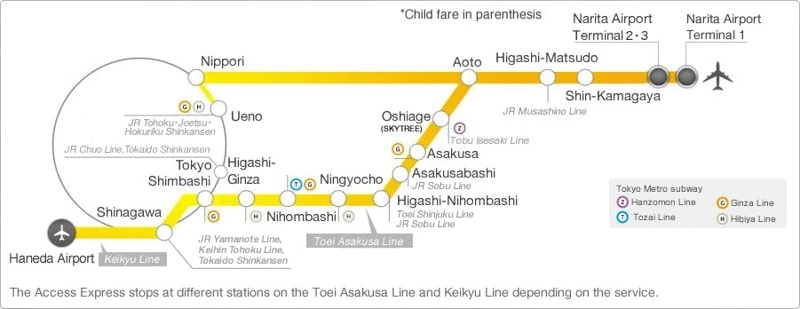
The Keisei Narita Sky Access Line (Access Express) offers direct access to Nippori Station and Keisei Ueno Station, just less frequently and slower than the Skyline. Other departures require a transfer, so be sure to check the schedule.
The Access Express also offers direct access to stations in eastern Tokyo, including Oshiage Station (Tokyo Skytree), Asakusa Station, Higashi-Ginza Station, and Haneda Airport. Other destinations will require a transfer.
Fares vary by your final destination.
One-way Keisei Narita Sky Access Line (Access Express) fares from Narita Airport to::
- Keisei-Ueno Station: about 65 mintues. 1,240 yen
- Oshiage Station: about 55 minutes. 1,170 yen
- Asakusa Station (Tobu Toei Metro): about 60 mintues. 1,290 yen
- Higashi-Ginza Station: about 70 minutes. 1,330 yen
- Haneda Airport: about 105 minutes. 1,800 yen
Keisei Main Line (Limited Express)
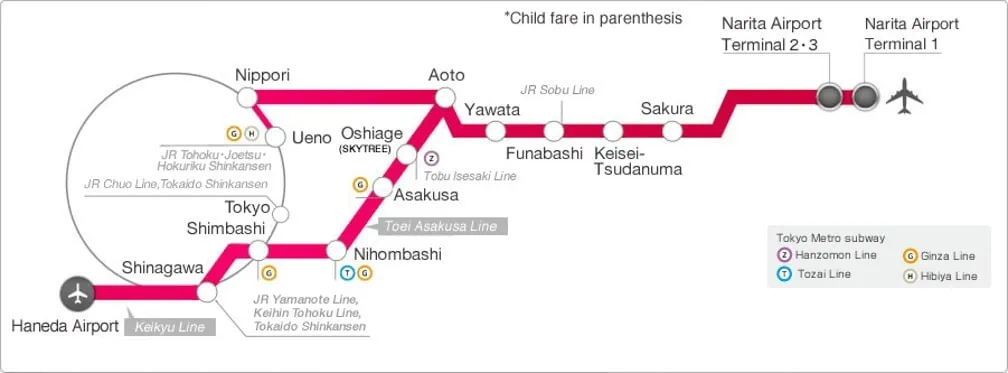
The Keisei Main Line (Limited Express) is the slowest and cheapest Keisei train option from Narita Airport to destinations around Tokyo.
The line runs the same route as the Access Express Line but with more frequent stops. You will need to transfer to reach many of the stations.
Fares vary by your final destination.
One-way Keisei Main Line (Limited Express) fares from Narita Airport to:
- Keisei-Funabashi Station: about 50 minutes. 740 yen
- Aoto Station: about 67 minutes. 920 yen
- Nippori Station: about 78 minutes. 1,030 yen
- Keisei-Ueno Station: 83 minutes. 1,030 yen
How to get to Tokyo from Narita International Airport by bus
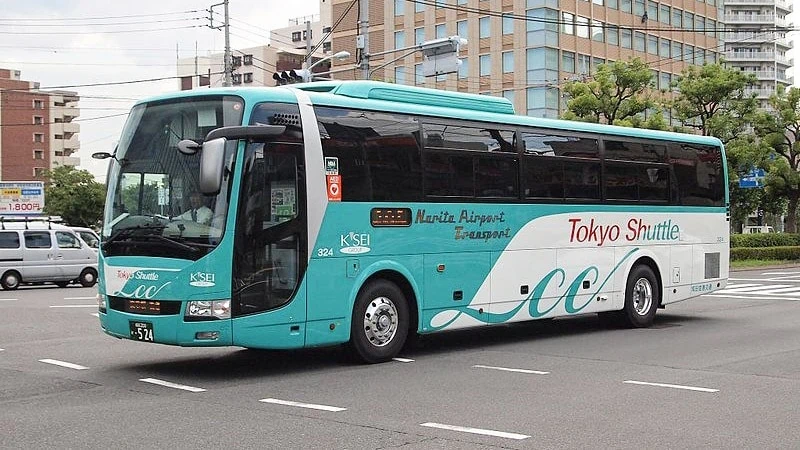
A great alternative to taking trains from Narita Airport to Tokyo is the bus.
Many bus companies offer direct connections to locations across Tokyo and nearby prefectures.
Prices for these buses vary greatly depending on services and your destination. Limousine buses can cost as much as 3,500 yen one way, while new, low-fare companies have started offering one-way fares for as low as 1,000 yen.
Buses departing from Narita Airport leave from the bus lane on the first floor of each terminal.
Buses arriving at Narita Airport arrive at the bus lane on the 4th floor of Terminal 1, the 1st and 3rd floors of Terminal 2, and outside of Terminal 3.
You can view a complete list of bus companies, timetables, and fares at https://www.narita-airport.jp/en/access/bus/.
How to get to Tokyo from Narita International Airport by taxi
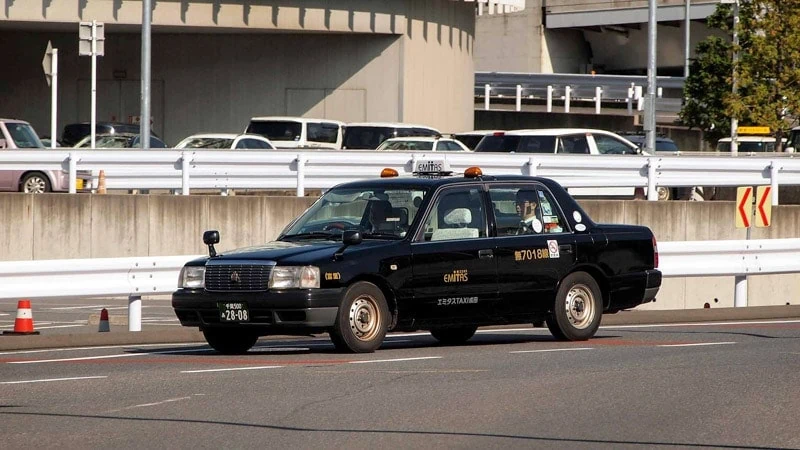
So you want to take a taxi from Narita Airport to Tokyo? Be prepared to spend.
As mentioned, Narita Airport lies about 37 miles (60 kilometers) east of central Tokyo. Since the airport is so far from the city center, taxi rides into the city are pretty expensive. As explained before, there are much cheaper options for reaching the city.
If you must get a taxi or feel like splurging on one, you can expect to spend around 20,000 yen or more per ride to your destination.
Taxi rates can vary greatly depending on your destination, time of day, and traffic conditions. I have listed fixed-rate taxi fare options below.
Standard and fixed-rate taxis are available at stand 15 on the first floor of Narita Airport Terminal 1 or at stands 29, 30, and 31A on the first floor of Narita Airport Terminal 2. Those at Terminal 3 will have to use the intercom on the first floor.
Fixed one-way taxi fares from Narita Airport to::
- Edogawa, Katsushika, Adachi: 16,000-18,500 yen
- Koto, Sumida, Odaiba, Higashi-Yashio: 19,000-19,500 yen
- Chuo, Chiyoda, Taito, Bunkyo, Arakawa: 20,000-21,500 yen
- Shinjuku, Toshima, Nakano, Shibuya, Meguro, Minato (excluding Odaiba), Shinagawa (excluding Higashi-Yashio): 22,000-22,500 yen
- Itabashi, Kita, Nerima: 23,500-25,000 yen
- Setagaya, Suginami, Mitaka, Musashino: 24,500-26,500 yen
Haneda International Airport
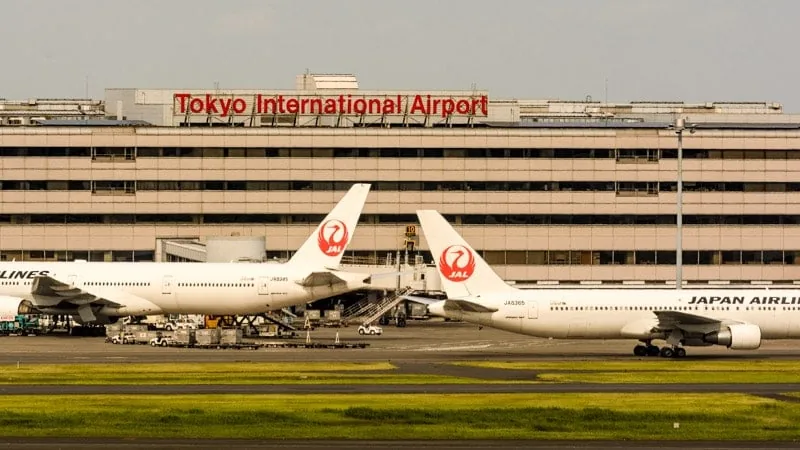
Tokyo International Airport, more commonly known as Haneda International Airport, is one of two major airports in the Greater Tokyo Area. The airport lies only 8 miles (14 kilometers) south of Tokyo Station.
Haneda Airport serves almost all domestic flights departing and arriving in Tokyo. If you are flying from anywhere in Japan to Tokyo, then odds are you will land at Haneda.
Unknown to many, Haneda Airport is actually the second busiest airport in Asia, with over 72 million passengers passing through it in 2014.
The airport serves as the primary base of Japan Airlines and All Nippon Airways (ANA). It also serves as the base of smaller Japanese airlines, including Solaseed Air, Air Do, Skymark Airlines, and StarFlyer.
Although most international flights arriving in Tokyo depart and land at Narita Airport, Haneda Airport is beginning to serve many new international routes.
Some airlines that have routes here include Hawaiian Airlines (from Honolulu), Delta Airlines (from Los Angeles and Seattle), United Airlines (from San Francisco), and American Airlines (from Los Angeles).
The two main ways to reach central Tokyo from Haneda Airport are the Keikyu Line and the Tokyo Monorail. Both require a transfer to the JR Yamanote Line to reach major stations in central Tokyo.
Pros of arriving and departing at Haneda International Airport
- The airport is much closer to central Tokyo than Narita Airport
- Public transportation options are cheaper than Narita Airport
Cons of arriving and departing at Haneda International Airport
- Limited options for international flights
- Trains leaving the airport for central Tokyo require a transfer
- One of the busiest airports in the world
How to get to Tokyo from Haneda International Airport by Keikyu Line and JR Yamanote Line
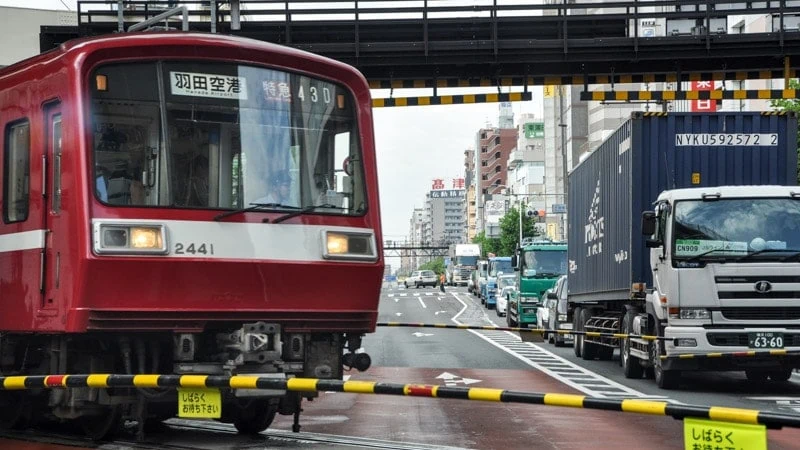
Getting from Haneda International Airport to destinations across central Tokyo by Keikyu Line and JR Yamanote Line is simple but requires a transfer at Shinagawa Station.
The journey is cheap and quick, but if your final destination is not Shinagawa Station, you must take at least two train lines.
To get to destinations such as Toyko Station, Shinjuku Station, or Shibuya Station, you will first have to board a Keikyu Line train (towards Sengakuji Station). You will need to transfer from Shinagawa Station to the JR Yamanote Line.
The JR Yamanote Line circles central Tokyo. Depending on your destination, you travel in either direction from Shinagawa Station.
The journey from Haneda Airport to Shinagawa Station takes about 15 minutes and costs 410 yen.
One-way JR Yamanote Line fares from Shinagawa Station to:
- Shinjuku Station: about 19 minutes. 200 yen
- Shibuya Station: about 12 minutes. 170 yen
- Ebisu Station: about 10 minutes. 160 yen
- Tokyo Station: about 11 minutes. 170 yen
- Ueno Station: about 19 minutes. 200 yen
How to get to Tokyo from Haneda International Airport by Tokyo Monorail and JR Yamanote Line
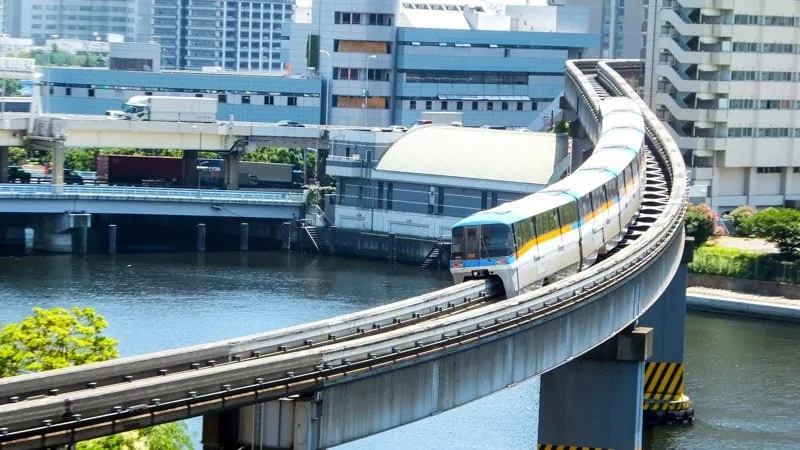
Another way of getting to Tokyo from Haneda Airport is by the Tokyo Monorail. The monorail also requires a transfer to reach major stations across Tokyo.
From the international terminal at Haneda Airport, take the Tokyo Monorail to Hamamatsuchō Station. From here, you can transfer to the JR Yamanote Line.
The journey from Haneda Airport to Hamamatsuchō Station takes about 15 minutes and costs 490 yen.
One-way JR Yamanote Line fares from Hamamatsuchō Station to:
- Shinjuku Station: about 25 minutes. 200 yen
- Shibuya Station: about 18 minutes. 200 yen
- Ebisu Station: about 15 minutes. 170 yen
- Tokyo Station: about 6 minutes. 160 yen
- Ueno Station: about 14 minutes. 170 yen
How to get from Haneda Airport to destinations across Tokyo and Japan by Keikyu Limousine Bus
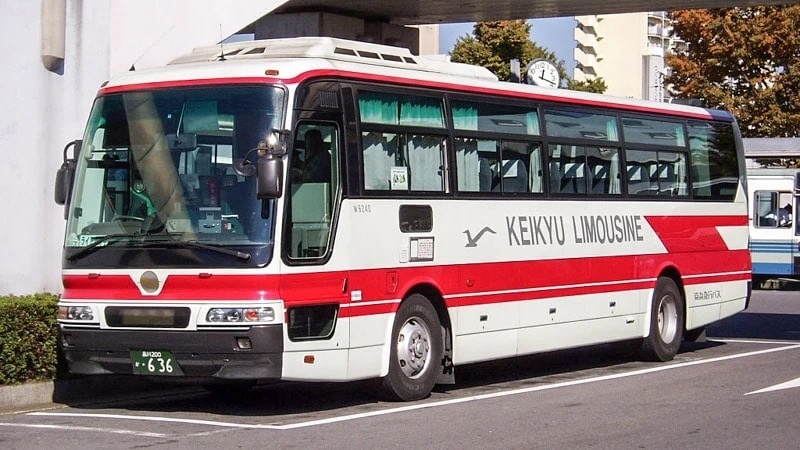
The Keikyu Limousine Bus provides direct access to destinations across the Greater Tokyo Area and beyond.
Unlike the Keikyu Line train and Tokyo Monorail, the Keikyu Limousine Bus requires no transfers to reach its destination, which is perfect for those with large or excess luggage.
The downside of taking the Keikyu Limousine Bus is that the destinations are limited, and you may need to take an additional train to reach your final destination.
All seats on the bus are reserved, and space is available for any luggage you may have.
One-way Keikyu Limousine Bus fares from Haneda Airport to:
- Yokohama Station: about 40 minutes. 580 yen
- Yamashit Park/Minato Mirai 21 (Yokohama): about 35 minutes. 720 yen
- Odaiba (Hotel Grand Pacific Le Daiba): about 30 minutes. 520 yen
- Tokyo Sky Tree Town: about 50 minutes. 920 yen
- Shibuya: about 60 minutes. 1,030 yen
- Gotemba/Hakone Togendai Station: about 155 minutes. 2,260 yen
- Hakone-Yumoto Station: about 130 minutes. 1,950 yen
- Mt. Fuji: about 150 minutes. 2,470 yen
- Shinigawa Station to Gotemba Premium Outlets: about 95 minutes. 1,650 yen
How to get from Haneda Airport to destinations across Tokyo by Keikyu Taxi
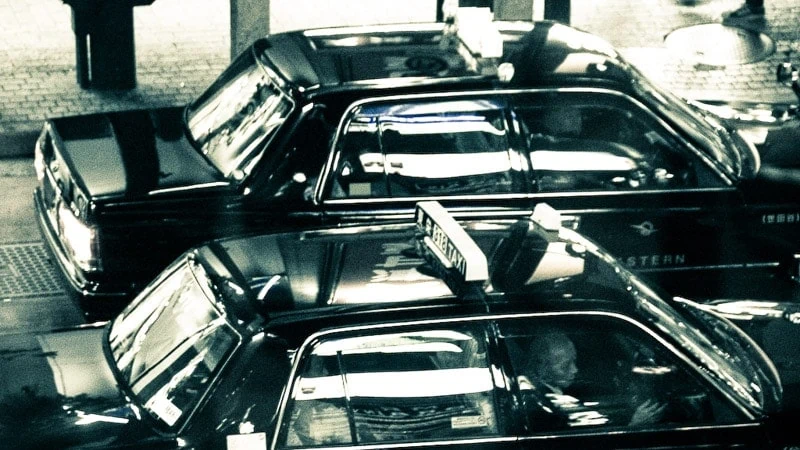
Taking a Keikyu Taxi could be your best option if you arrive early or late at Haneda Airport or don’t want to deal with the hassle of public transportation.
Keikyu Taxi offers set fares, which increase late at night and early in the morning.
One-way Keikyu taxi fares from Haneda Airport to:
- Chiyoda Area: 5,600 yen (set fare), 6,800 (late night)
- Shibuya Area: 6,400 yen (set fare), 7,600 (late night)
- Shinjuku Area: 6,800 yen (set fare), 8,200 (late night)
- Taito Area: 6,900 yen (set fare), 8,200 (late night)
- Toshima Area: 8,500 yen (set fare), 10,100 (late night)
Last Updated on April 17, 2024
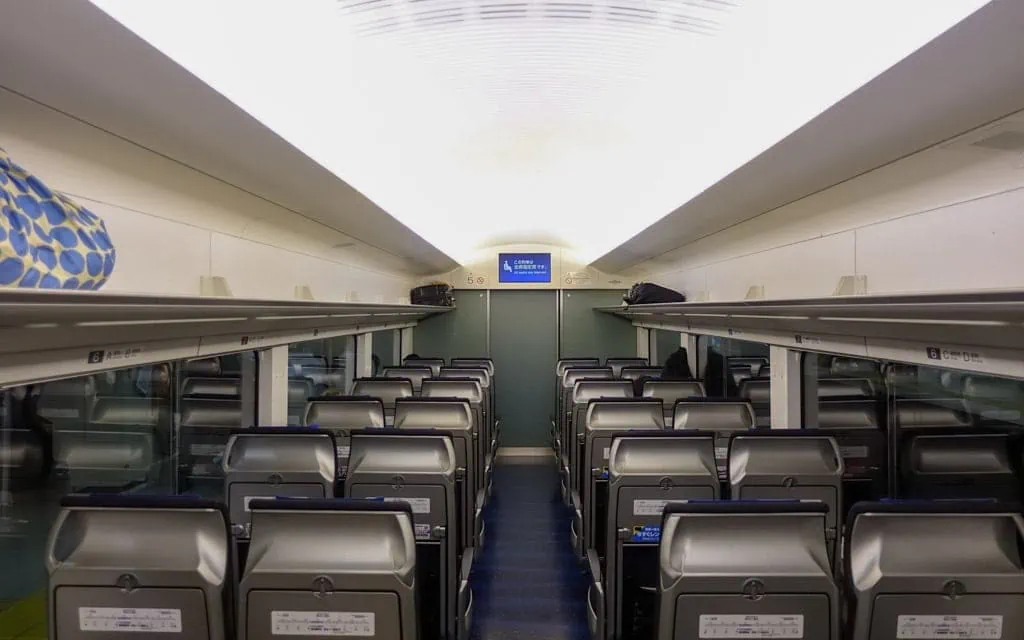
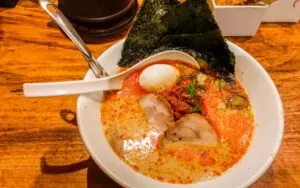
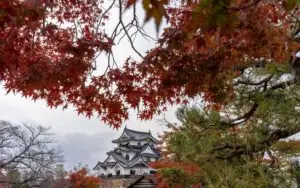

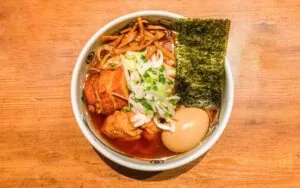

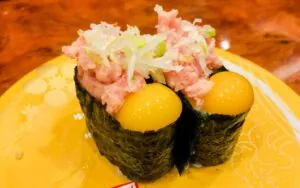
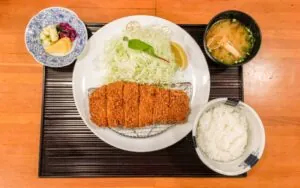
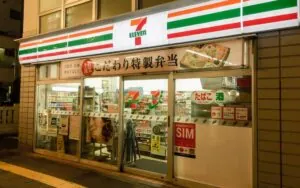


Thanks for this very detailed and useful post!
Is the monorail included on the Japan Rail pass?
Elliott,
Yes. The monorail is covered by the JR Rail Pass.
Do you have information for transportation during the 2019 Rugby World Cup?
Elizabeth,
Transportation options should be business as usual. You can find timetables, ticket prices, and detailed information by visiting http://www.hyperdia.com/en/
Hi Anthony, this is a great post, but unless I missed the answer it seems you haven’t stated a preference for either airport.
For a first time visitor looking to stay in Yokohama for the Rugby World Cup, which would you err towards?
Also do you think it will still be viable to use the rail pass during the tournament as I assume the trains will be very busy, so booking the bullet train could be risky, unless you can book them all in one visit to the booking office at the first train station?
Sorry for asking so much, but yours is the first post with useful information on I’ve found 🙂
Rich,
I always recommend Haneda Airport whether you are staying in Tokyo or Yokohama. It is much closer to Tokyo and very close to Yokohama. It might be more busy but I think you should be fine with seats for the bullet train even during the Rugby World Cup. If you know your plans ahead of time, you can book seat reservations in advance to be safe. Otherwise, just book a day or two before. Also remember, most trains have unreserved seats, and if those are full, you could stand. If you book a seat reservation and you don’t need it, you can always go back to the station and cancel it.
Anthony,
Thanks for this detailed post. My son and I will be traveling through Japan in Feb and I’m considering getting a flight with a longer layover so we can explore Tokyo for a day. He has a US passport I don’t but I have a green card do you know if I can get my Visa there or do I need to get it here in LA? I’m also a foodie what would you recommend for us to go to to eat some delicious sushi, ramen and steak? Thank you so much for your time!
Raymond,
Most tourists to Japan do not require a visa. Which country do you have a passport for? As for food, I recommend visiting Shinjuku and Shibuya. You will find an endless amount of sushi, ramen, and steak restaurants.
Hi Anthony. I have booked a flight to Haneda from Lomdon in February 2019. My husband and I are vegetarians & do not eat fish but can eat eggs
We want to visit interesting places during our 2 week stay.
Will there be a problem getting vegetarian food without fish?
Also are there Indian restaurants?
Thanks
Kay,
While I do not have much knowledge with vegetarian and Indian restaurants in Japan, I do not believe it will be an issue. I would just use Yelp and TripAdvisor to find restaurants and I bet you will be surprised at the number of options.
Anthony
Thank you for such an informative site.
We are flying from London and cruising from Yokohama. Which route would you recommend? I see that the majority of international flights arrive in Narita.
Ruth,
I would book a flight into whichever airport is cheaper. While Haneda Airport is closer to Yokohama, it is easy to get to Yokohama from either airport.
Hello Anthony. You mention JR. I had believed you can only travel JR if you buy passes in your own country. ie Japan residents cannot use JR line. Is this true?
Rhonda,
There might be a few exceptions, but as I understand, Japanese residents are not allowed to purchase most JR Rail Passes. Foreigners can buy some passes in Japan (such as the 7 or 14 day JR Rail Pass), online, or through a travel agent/agency in their home country. Anyone can use any JR Line with a valid ticket or pass.
Hi Anthony,
Great post. Lots of useful information. I have a 7 hour layover in Heneda. Any recommendations on getting to see something in a short amount of time.
Thanks,
Craig
Craig,
Sorry for the late reply. Everything in Japan seems to run smoothly including trains, airport security, and customs, so with 7 hours you could head into the city for a few hours. What to see is a tough question.
You could take the Tokyo Monorail or Keikyu-Kuko Line to Zojoji Temple. Takes about 30 minutes by train then another 10 minutes on foot. You could explore the temple then wander the area until you find a local izakaya or restaurant that looks good. If you have more time you could explore the Kyu Shiba Rikyu Garden near Hamamatsuchō Station.
Enjoy your short visit to Tokyo.
We are cruising into Tokyo in September. We are looking to book our flight back to Orlando, FL.
Any suggestions on the airport? And getting from the ship to the airport?
Sandra,
Haneda Airport (HND) is closer to the Tokyo Cruise Port. With that said, getting to Narita Airport (NRT) isn’t too difficult to reach, just might take a little longer by Narita Express from Tokyo Station. I would just book whichever airport is more convenient for you (price, connections). Narita Airport is usually cheaper with more connections back to the states.
Anthony, Thank you for the thoughtful, insightful, and detailed article. I’m planning on going to Tokyo for the Olympics and this information is very helpful in my planning. Much appreciated!
Hi Anthony, great info, thanks for all of it. On Nov 2, I arrive at Narita at 8pm and Nov 6, leave Haneda at 8am. I plan (?) to get a hotel near relevant airport upon arriving and for departing. Have never been to Japan before. Want to experience Bullet Train, see Mt. Fuji, and sightsee Tokyo. Logistically, is it best to stay near Narita or Haneda for the 3 days/2 nites in between?
Butch,
I would stay either neither Tokyo Station or Shinjuku Station. Those two stations will give you the best connections to other parts of Japan. Also, I believe the bullet train stops only at a few stations in Tokyo. I believe Tokyo Station, Ueno Station, and Shinagawa Station.
Anthony,
What is the cheapest accommodation in Tokyo? I am planning to stay a few days in November of this year. thank you
Hang,
While it depends on what you consider cheap, I find that you can usually find affordable Airbnb properties around Shinjuku Station.
“But keep in mind that using your JR Pass on the Narita Express will use up one of your pass days, so ensure that you plan your journey correctly.”
Could you explain this? I was under the assumption that if I purchased something like a 14 day pass, I had unlimited rail rides during the 14 days. Is this not the case?
Thanks!
Kim,
You are correct. I guess I could have written it more clearly. What I was trying to say was that if you activate your JR Rail Pass on day 1 for only the Narita Express and then stay 3-4 days in Tokyo, then you might not be getting your money’s worth with the pass. For some, it pays off to pay out of pocket for the ride from Narita to Tokyo, stay a few days, then activate your pass for the remainder of the trip. Of course, it will depend on your plans, how long you are staying in Japan, and which pass you get.
Hiya, thanks for all the great info so far. Planning a trip with my daughter(21) in August 2020, it was for Olympics but its more now for shopping. We are going to stay in Shibuya for about a week, flying into Haneda airport if poss. What’s the best way to get to Shibuya, and what do you recommend we do and where to eat… Thanks
Heather,
To reach Shibuya from Haneda Airport, I recommend you check out http://www.hyperdia.com/. It will show you many options and prices. As for food, Shibuya seems to have an endless amount of restaurants on every corner. You could always just walk around and see what looks good. If you like affordable sushi in a laid back environment, I recommend Genki Sushi or Uoebi Sushi.
Hi Anthony,
Great informational post! I will be traveling to tokyo for 2020 summer olympics and this definitely helps. Just to confirm if i buy a rail pass for me and my son and we arrive in narita airport. If we are staying about 7 days and i choose buy 2 one way tickets and take the narita express to tokyo instead of activating our passes does this mean on our last day i can use the jr rail passes for our one trip from tokyo to narita airport but nothing else correct?
Travis,
The day you activate your pass will be day 1. So if you activate your 7 day pass on Monday, the pass will be valid until Sunday. If you travel back to Narita Airport within this period, you will be able to use your pass for the journey.
Hello Anthony! My fiancé and I would like to honeymoon to Japan in early November. It would be our first visit and any suggestions you have for an affordable magical trip would be much appreciated! Cheers, S
Sanaya,
Congratulations! November is my favorite time to visit Japan. For your first time I recommend Tokyo, Kyoto, and Osaka with side trips if you have more time. You should also be able to view some of the fall colors which is spectacular. Enjoy your trip!
Hi Anthony,
Good to read about your familiasing of Tokyo. Me and my wife plan to go Tokyo on free and easy. If go, this is our first visit to Japan. If we choose to stay a hotel near to those shopping centre (in Tokyo), which hotels do you suggest, our budget is about Singapore Dollars 250 per nite.
Is that we must book a train or bus pass in advance ? Can we buy the ticket at the site ? What happened if we miss the schedule , are we allowed to take the next available transport ? Do they announce in English ? Both of us are above 65 years old. Thanks.
Willy,
Sorry for the late reply.
I would recommend staying near Shinjuku Station. Surrounding the station are many restaurants, shopping malls, and tourist attractions. When you think of Tokyo at night, it’s Shinjuku. While I usually stay at Airbnbs, a few top rated hotels in the Shinjuku area include Hundred Stay Tokyo Shinjuku, Citadines Shinjuku Tokyo, Tokyu Stay Shinjuku. I would recommend using Google or Trip Advisor and researching hotels in the Shinjuku area and find what meets your needs.
If you are planning to travel around Japan by rail, I highly recommend you purchase a rail pass. There are many types of rail passes, but the most popular are the 7, 14, and 21 day nationwide passes. These passes can be purchased overseas or in Japan for an additional charge. Once you have your rail pass, you can use it to reserve seats on many trains including the shinkansen (bullet train). If you miss your train, you can just take the next train. If you reserved a seat and missed your train, be sure to cancel the seat reservation by visiting a ticket office located inside every train station.
Hi Anthony , we r traveling to Tokyo January 2020 arriving at Haneda Airport late evening, this is our first visit in Japan , we r there for 7 days then flying to Singapore from Osaka . Which area should we stay so we can explore Tokyo for s few days and r still able to travel to Kyoto and Osaka ?
Tess,
For traveling to Kyoto and Osaka by shinkansen, your easiest option would be to stay near Tokyo Station.
With that said, I would recommend you stay around Shinjuku Station. It is one of the more popular areas of Tokyo and has a lot of sights to see, restaurants, and great nightlife. While the shinkansen does not stop at Shinjuku Station, it’s just a quick train ride to Shinagawa Station where you can board the bullet train on to Kyoto and Osaka.
Does Air Canada fly into Haneda Airport?
Ralph,
Air Canada operates a non-stop flight from Toronto–Pearson to Hanenda Airport (Air Canada AC 1).
Any recommendations for Hotels in the city center-4 star? WE have two days to visit before a cruise and want to make the most of our time. We may plan to visit Disney, but heard Shiyuba & Harajuku are a must….any other must-do’s with only two days? Will it be easier to just take taxi’s?
Very good read! My 0.01 cents… If I have a choice of flying to either (and most of the time there is with major US airlines and their partners, either ANA or Air Japan) and am heading to central Tokyo while traveling light, I would personally pick Haneda as it is so much closer to the city. While it’s true that Monorail does require a transfer, if I am staying east of main Tokyo station around Ginza or Kyobashi (and I usually do stay in this area instead of Shinjuku or Shibuya) technically there’s the Keikyu line that directly takes me there from Haneda without needing to transfer.
Hi Anthony,
I’m planning my first visit to Tokyo with a 4year old kid. Will arrive at Haneda Airport around 4pm local time. I’m thinking to stay 2 nights at Mount Fuji then head straight Shinjuku area after that for another 5 nights stay. Would you recommend this approach and the feasibility?
Hi Anthony,
Love your post! I’m taking my 19 year old daughter to Tokyo for the first time end of this month. We will be staying 4 days. Do you recommend I get the 7 days JR Pass? We will be arriving at Narita International Airport. Also, can you explain better how the JR Pass like once it’s activated, it doesn’t matter how I use it as long as it’s within 7 days of activation? For example, if I used it on the express train to Tokyo from Narita Airport, you said that will use up one whole day of rides, so can I use day 2 on day 1? I hope I’m making sense. Is Tokyo in general a pretty safe city? Does it matter where our AirBnb is located? What I’m asking is are there bad areas in Tokyo? My daughter is really into Anime and Cosplay, where do you recommend we go for shopping that is not too expensive. She really likes anime figurines too. Thanks in advance for your help.
Great posts Anthony, but the answer to your question is that Haneda is the most convenient option by far. It is smaller, closer to the city and has the same bus and rail links as Narita. I am a 6 year resident of Tokyo and always choose HND where possible, though everyone will have no problem with either airport, but HND is cheaper! If you want to see a different side of Japan whilst in Tokyo, try Kamakura, lots of temples and the ocean and easy to get to by Japans wonderful subway train system
Rev,
I love Kamakura! I can’t wait to come back to Japan, hopefully in 2022. I agree that HND is much easier and centrally located. But, for those who have a JR Rail Pass and are heading to Shinjuku, like often in my case, sometimes its not too bad to hop on the Narita Express and be there in an hour. I guess it depends on where in the city you are staying and if you have a pass. Otherwise, HND is easier for sure.